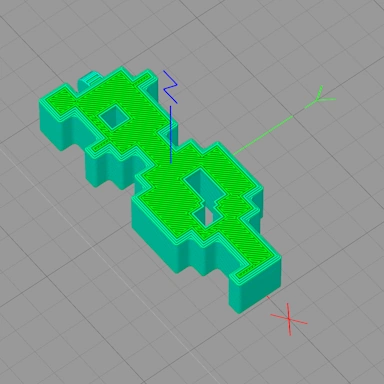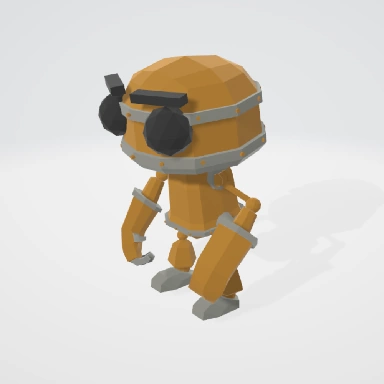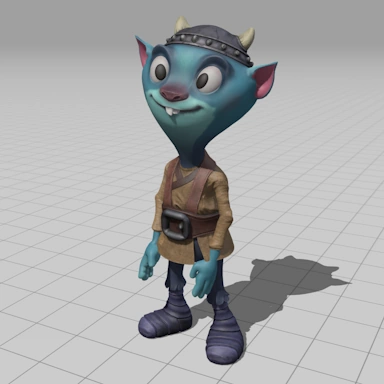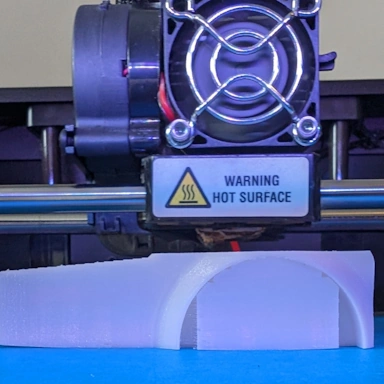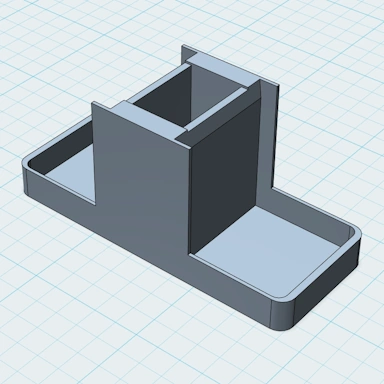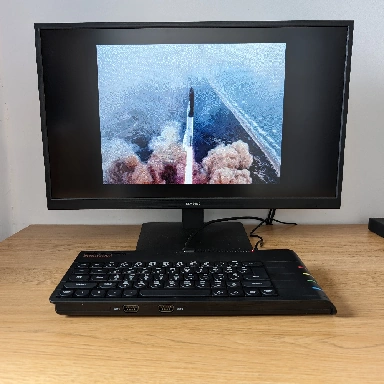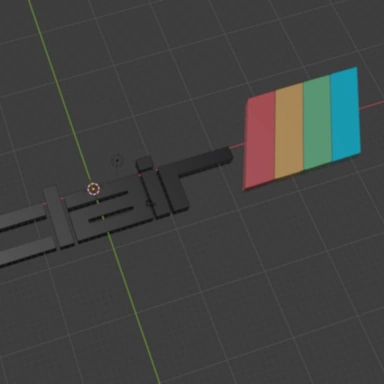SpeccyX - ZX Spectrum Next Handheld
This project is unrelated to the official Spectrum Next Kickstarter or the Spectrum Next team. This is simply an attempt by myself to create a handheld Spectrum using 3D printing technology, as well as a smaller version of the Spectrum Next board that I backed on Kickstarter.
It's been a while since building a laptop case for my Spectrum Next board, and since then I have learned a lot more about the Spectrum Next board, enough in fact to give me the confidence to try and build a smaller version of the board. Something that would be suitable for creating a hand-held Spectrum.
Another Spectrum Handheld?
Spectrum games can already be played on a large variety of phones, tablets, Nintendo DS, Sony PSP, Raspberry Pi, etc. via software emulation. There was, of course, the infamous Vega + which initially promised to deliver a dedicated Spectrum handheld experience but didn't exactly work out well for the people who backed that project on Indiegogo (one of those backers was myself).
The handheld I wanted to create would be a dedicated Spectrum device; it will be compatible with Spectrum Next games, and most importantly, it will be real hardware rather than a software emulator.
A Big Calculator Meets a GameBoy
Here are some designs for my handheld Spectrum. I've been calling it the SpeccyX for now, and as you can see, it looks like a cross between a big calculator and a Gameboy! It is fairly large, probably about the size of a small tablet, which I'm happy with. There may be scope to make a smaller version in the future, but this is dependent on me finding a smaller screen that delivers an acceptable image.
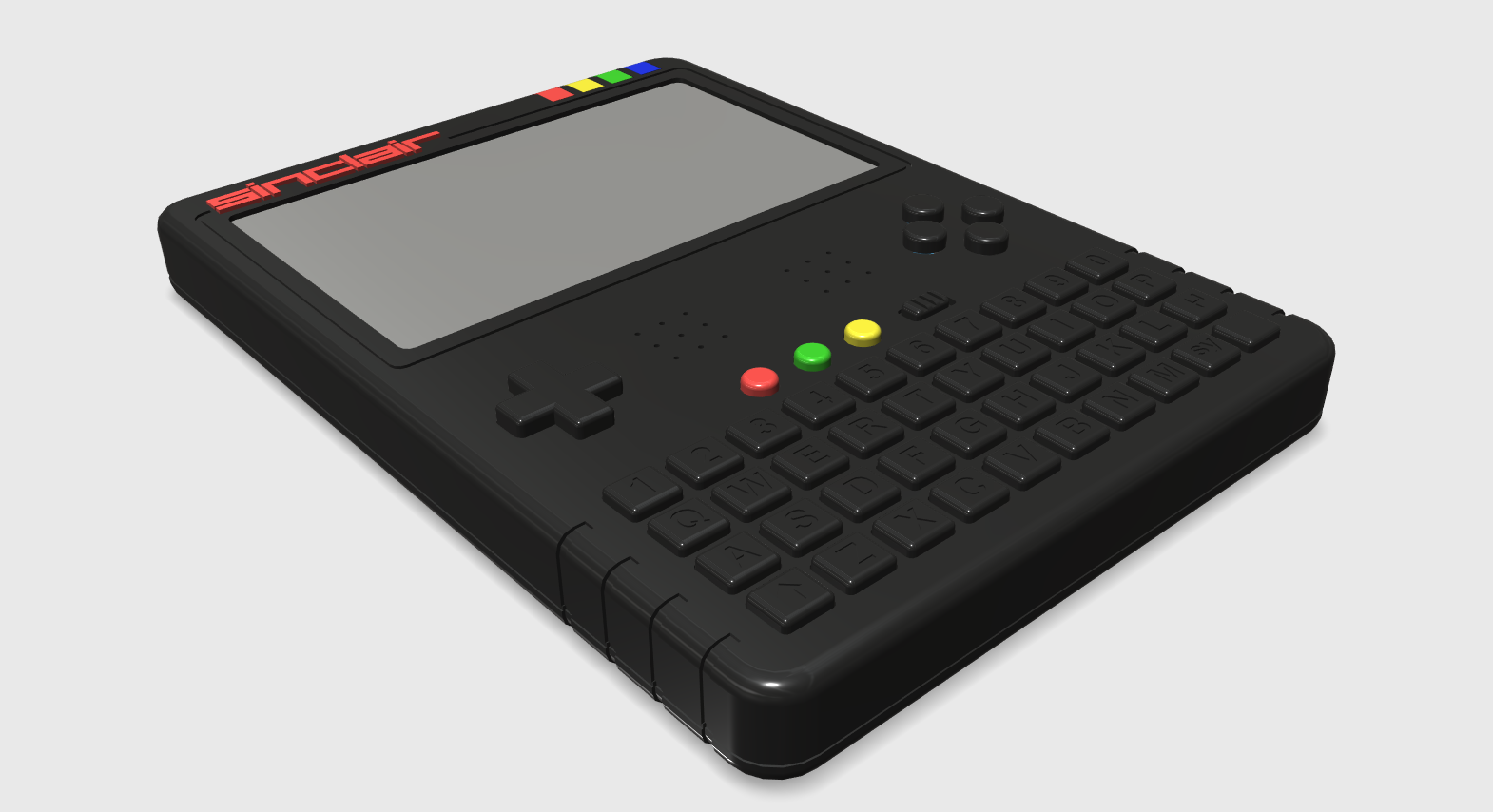
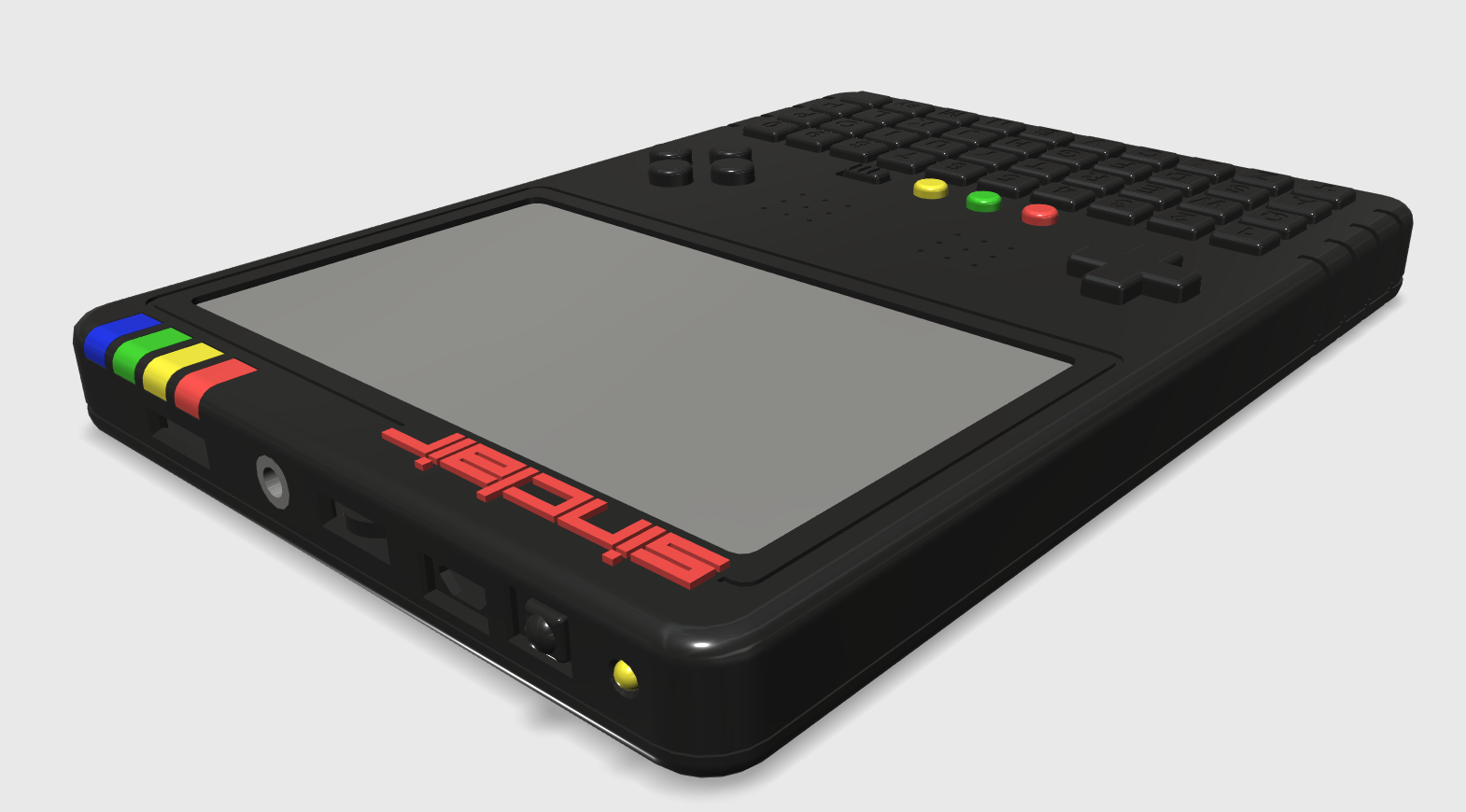
The SpeccyX
- Dimensions: 127mm x 178mm x 18mm
- LCD: 5" HDMI (Spectrum screen area ex. border 71mm x 52mm)
- Controls: Nintendo DS D-Pad and button assemblies
- Keyboard: 40 Buttons, 9mm x 8mm each in size
- Sound: Stereo speakers/headphone socket with volume dial
- Storage: Micro SD (spring loaded)
- Firmware/OS: Standard Spectrum Next firmware and NextZXOS
It's a Spectrum Next
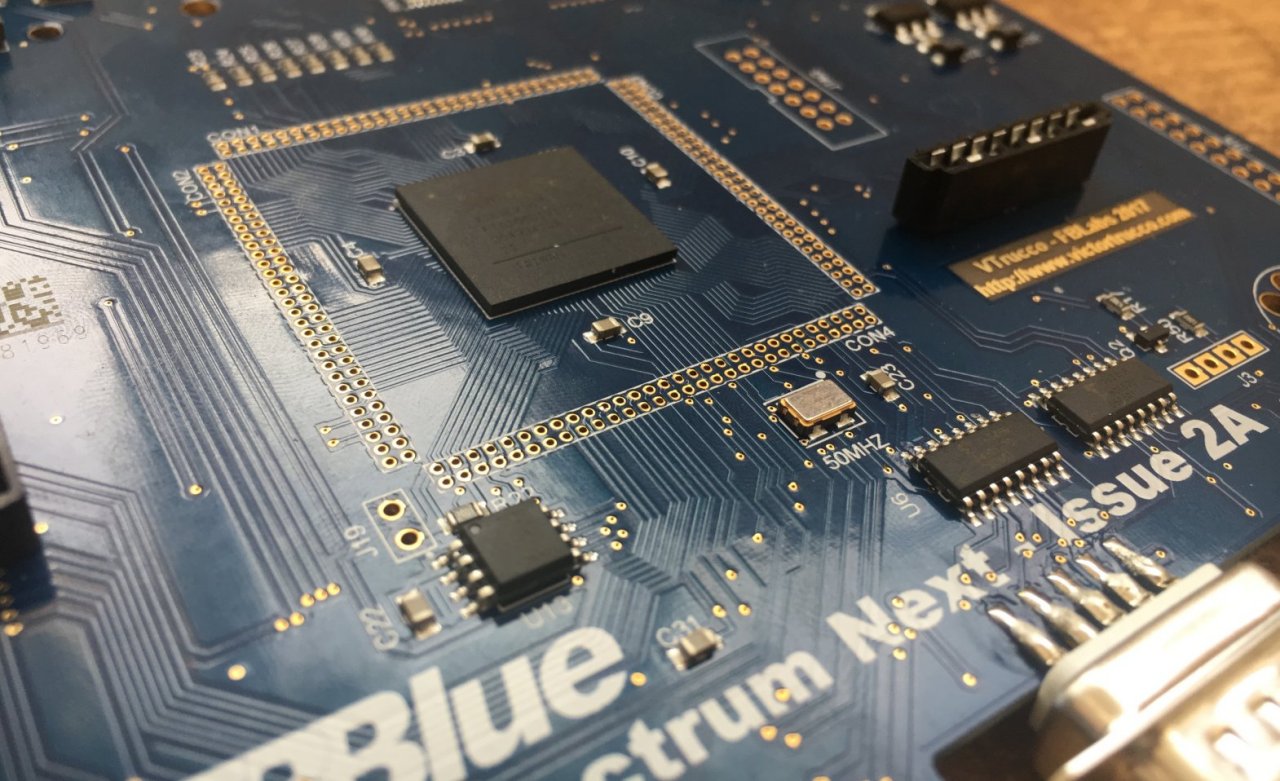
While emulators are fine for a low-cost retro gaming experience, I prefer my retro games to run on real hardware. In this case, the awesome ZX Spectrum Next. I received my Next board back in December 2017 and, since then, have learned enough about it to be able to re-produce the board in a much smaller footprint. Some things, such as the expansion connector and ear (tape loader) socket, have been removed completely. This is a handheld where games are loaded via SD card, so there isn't much need for these.
The Keyboard
I've never been a huge fan of virtual keyboards on other Spectrum handhelds, so for the SpeccyX, I wanted to have a small keyboard containing all the keys found on the original rubber-keyed Spectrum. It is a simple micro-switch-driven keyboard and is not meant for fast typing; rather, its sole purpose is to enable navigating game menus quickly, selecting the options you want, and getting the game started the way the games were originally designed to be operated.
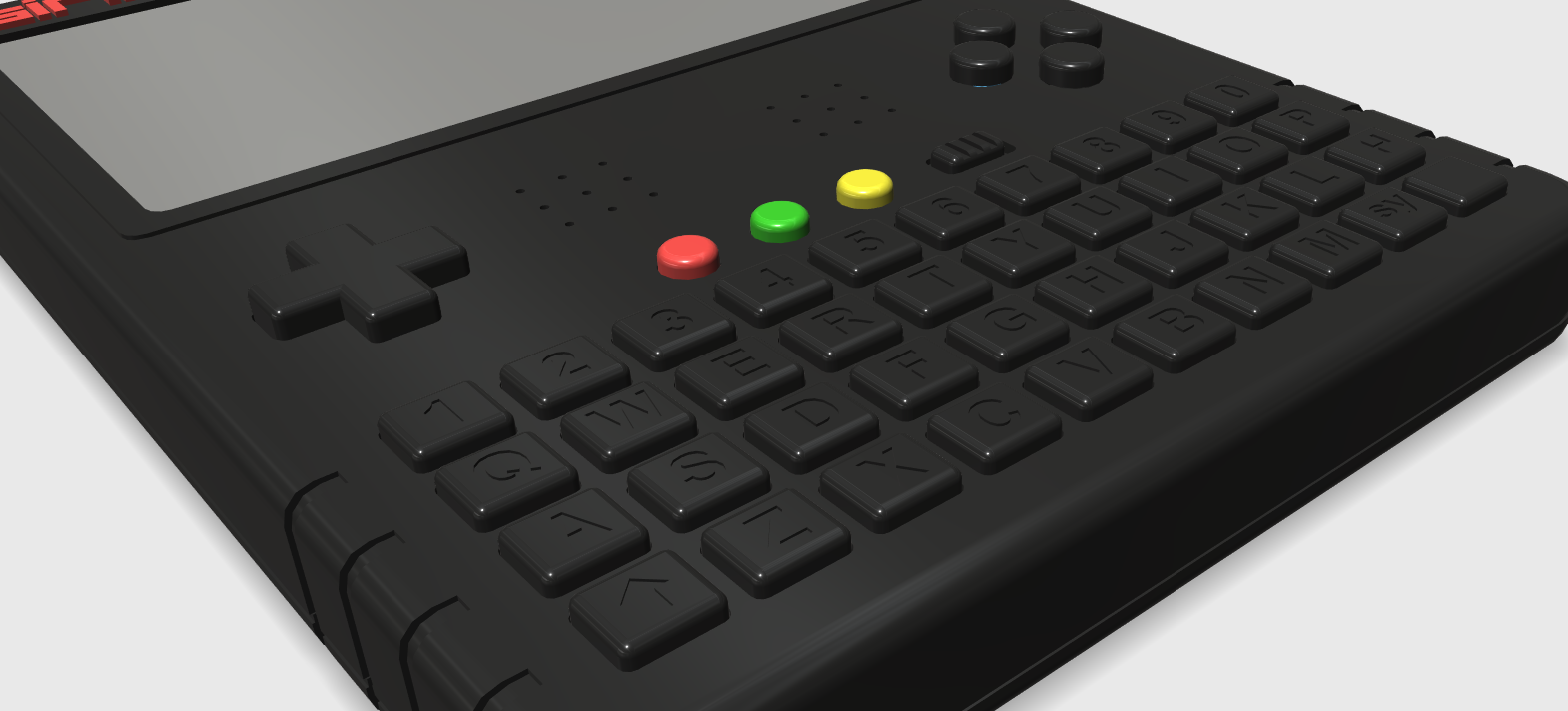
The Game Controls
When it comes to the D-Pad and the four game buttons, I decided to simply use the Nintendo DS D-Pad and button assemblies. These can be found on eBay for a couple of ££'s and as you can imagine, with a Nintendo device, they feel perfect for the job.
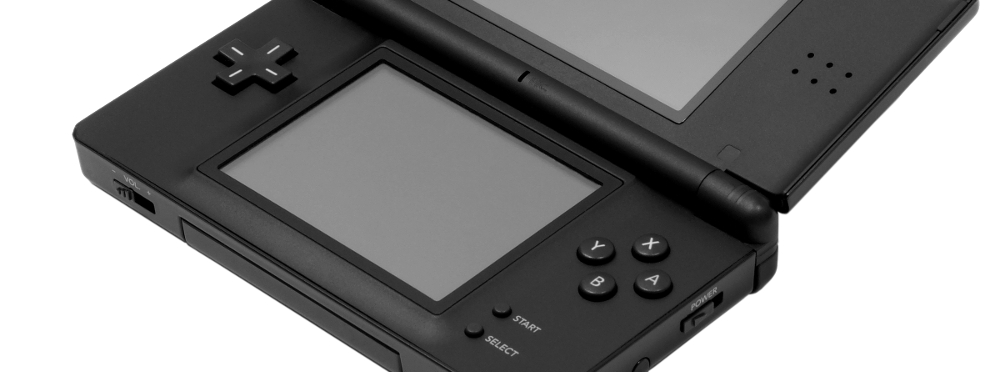
The D-Pad and the two buttons ("A" and "B") map to the Kempston joystick. With 2 additional buttons ("X" and "Y") above that map to the "Enter" and "Space" keys, What if the game doesn't support a Kempston joystick, I hear you say? There is an additional slide switch to the right of the Green M1 button that toggles the D-Pad/"A" & "B" buttons between Kempston and Sinclair, which should cater for most games.
If a game only has a redefine keys option, again, the Sinclair option can be used, as these simply map to the keys "6" to "0" anyway, and along with the "X" and "Y" buttons, this should give enough buttons for most games.
Anyone who is familiar with the Spectrum Next (and earlier Spectrums) will know the menus in the OS are driven by the cursor keys; however, by installing this nifty driver made by Paul Land The D-Pad (in Kempston mode) can be used to navigate menus and load games instead of the traditional Spectrum cursor keys.
The Screen
This is where things get complicated! As the SpeccyX is based on the Spectrum Next and because it must also be compatible with the Spectrum Next FPGA core/firmware, I am constrained by the two video outputs of the Next, namely VGA and HDMI. Having these 2 options for connecting the handheld to a small LCD screen should make things easy (in theory). The reality, though, is a little more challenging.
VGA
Finding a small VGA LCD (5 inches or less) that can display a minimum of 640x480 is tricky. For a start, most of these (4:3) screens have a lot of weight to them and tend to be a little on the power-hungry side, which is not good for a battery-driven handheld. Once a reasonably sized screen has been found, the likelihood is that the image will not be displayed correctly and will most likely not be centered on the screen. This is due to Next not generating a VGA signal that these small screens can digest. Of all the screens I have tried that feature VGA inputs, none of them have been acceptable.
Sure, it's possible to sort the image out via the built-in screen menus that allow fine tuning of the vertical and horizontal positioning, but this isn't ideal when you have to do this every time you turn the device on. There must be a better option.
HDMI
Thankfully, the Next also has HDMI output, which is more tolerant of small LCDs. After testing different screens, I settled on a 5-inch screen I found on eBay, which also came with an HDMI driver board.
5" HDMI
Although there are smaller screens, many of them simply do not support anything higher than 480x320, which, when connected to the Next, results in a blurry image. In an ideal world, the FPGA core would be modified to output a resolution to match these small screens; however, for now, I can live with the larger screen.
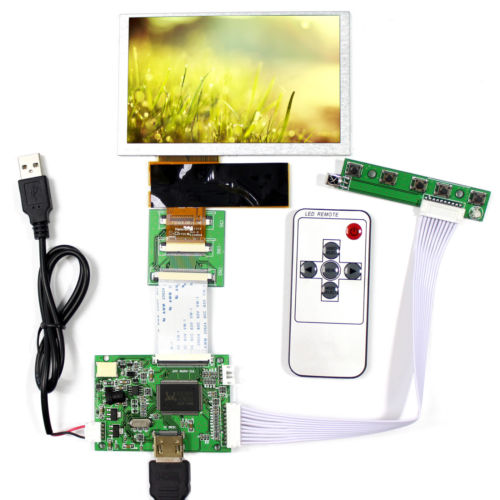
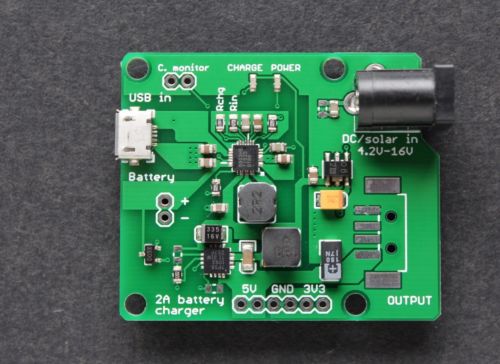
The Custom Spectrum Next PCB
As already mentioned, I received my Spectrum Next board back in December 2017 and, since then, have been re-creating a smaller version of it. Due to the lack of any schematic (due to the fact that the final Kickstarter units were delivered, I believe), I removed the FPGA and worked out which trace went where. Now I have a smaller version of my Next board.
Here is the SpeccyX assembled, just waiting for the back panel to be fitted. A total of 5 PCB's make up the handheld:
- Mini Spectrum Next board
- Keyboard/D-pad input board
- HDMI driver board
- Battery/power supply board
- External connector board
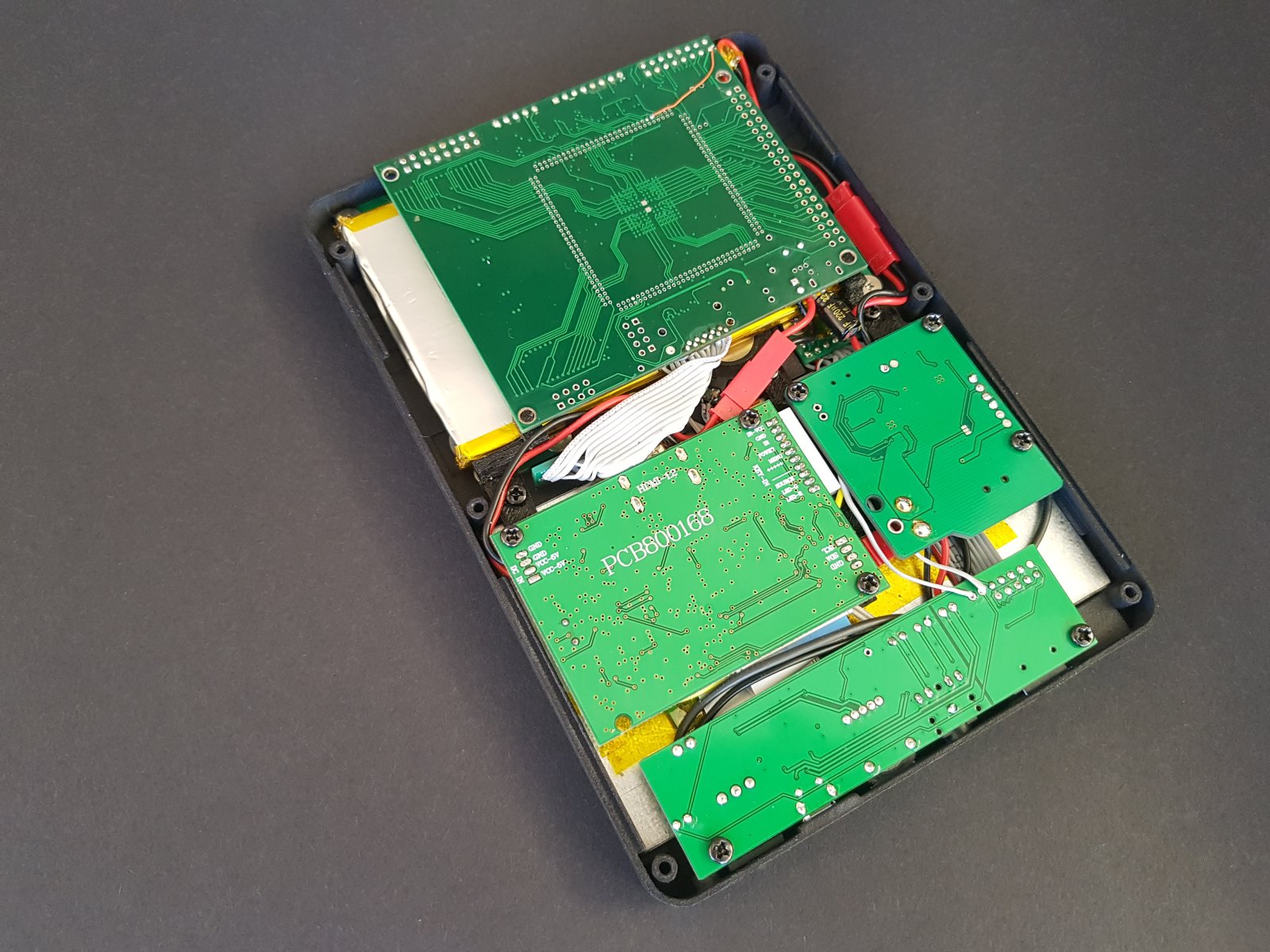
All Done
For the 3D printing, I initially used my trusty Makerbot Replicator 2 to create the initial prototype cases. This enabled me to quickly make changes until the design evolved into something that would both work and all fit together at the end. The final printed plastic parts are done using Shapeways Premium Versatile Plastic service. I have used Shapeways for many years, and they always do a great, high-quality job for a reasonable price.
The whole SpeccyX case could easily be 3D printed using the Makerbot Replicator 2 or other home 3D printers, and the size of the 3D printed parts will easily fit these printers too.
Here it is, all assembled and playing a demo version of Dreamworld Pogie. The keyboard buttons are all black, and I will at some point either paint the characters on them or maybe use some small stickers.
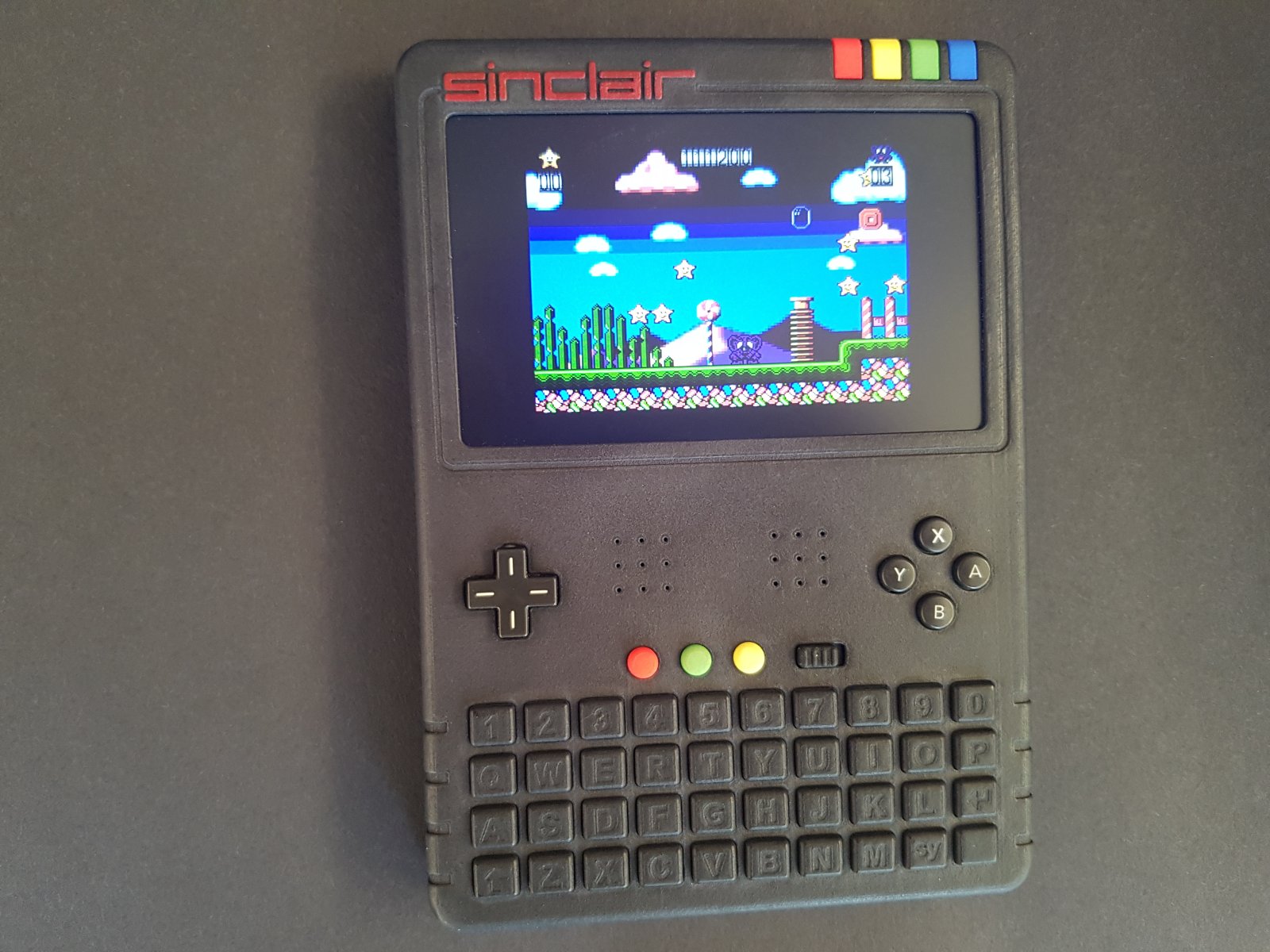
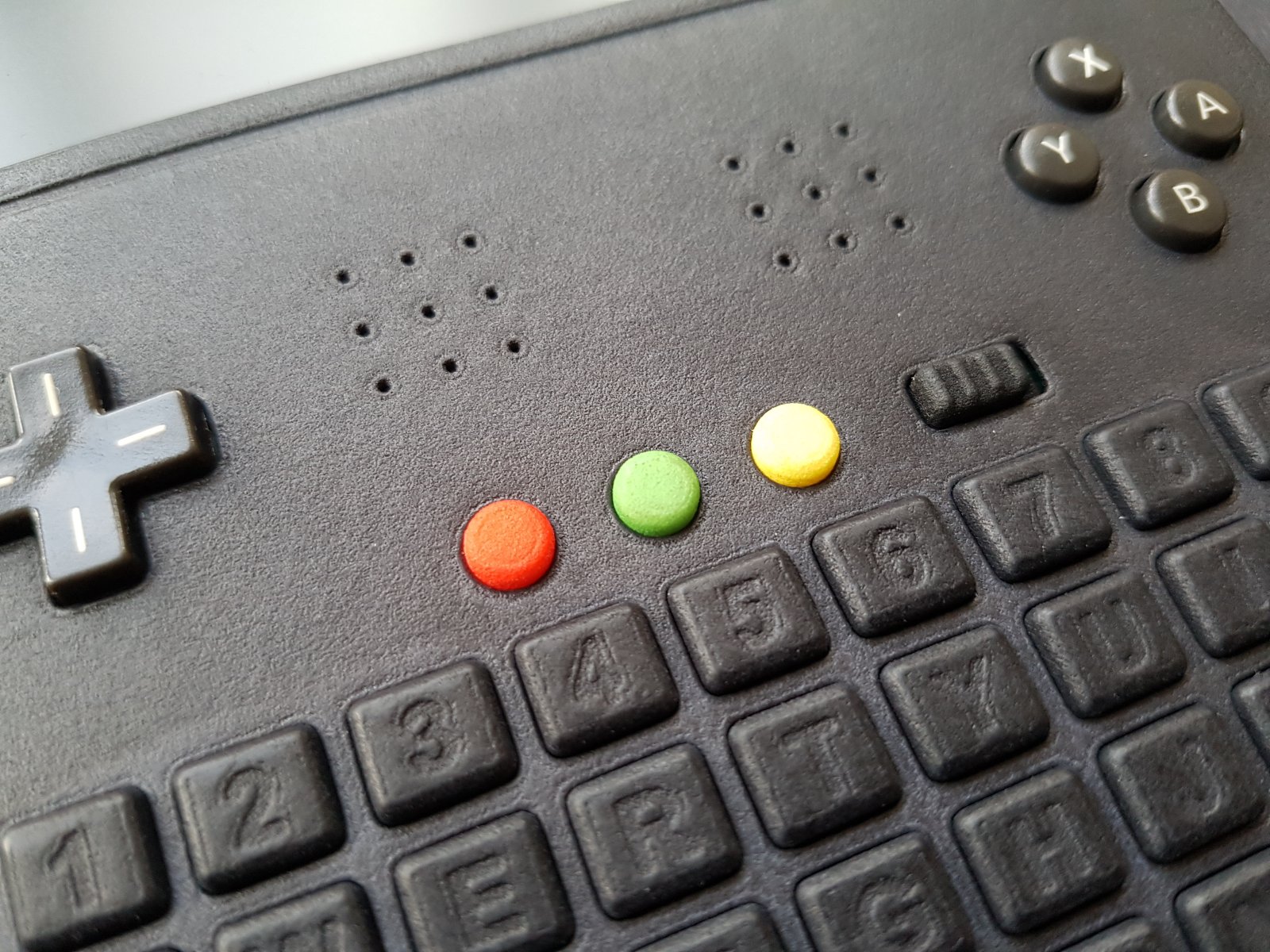
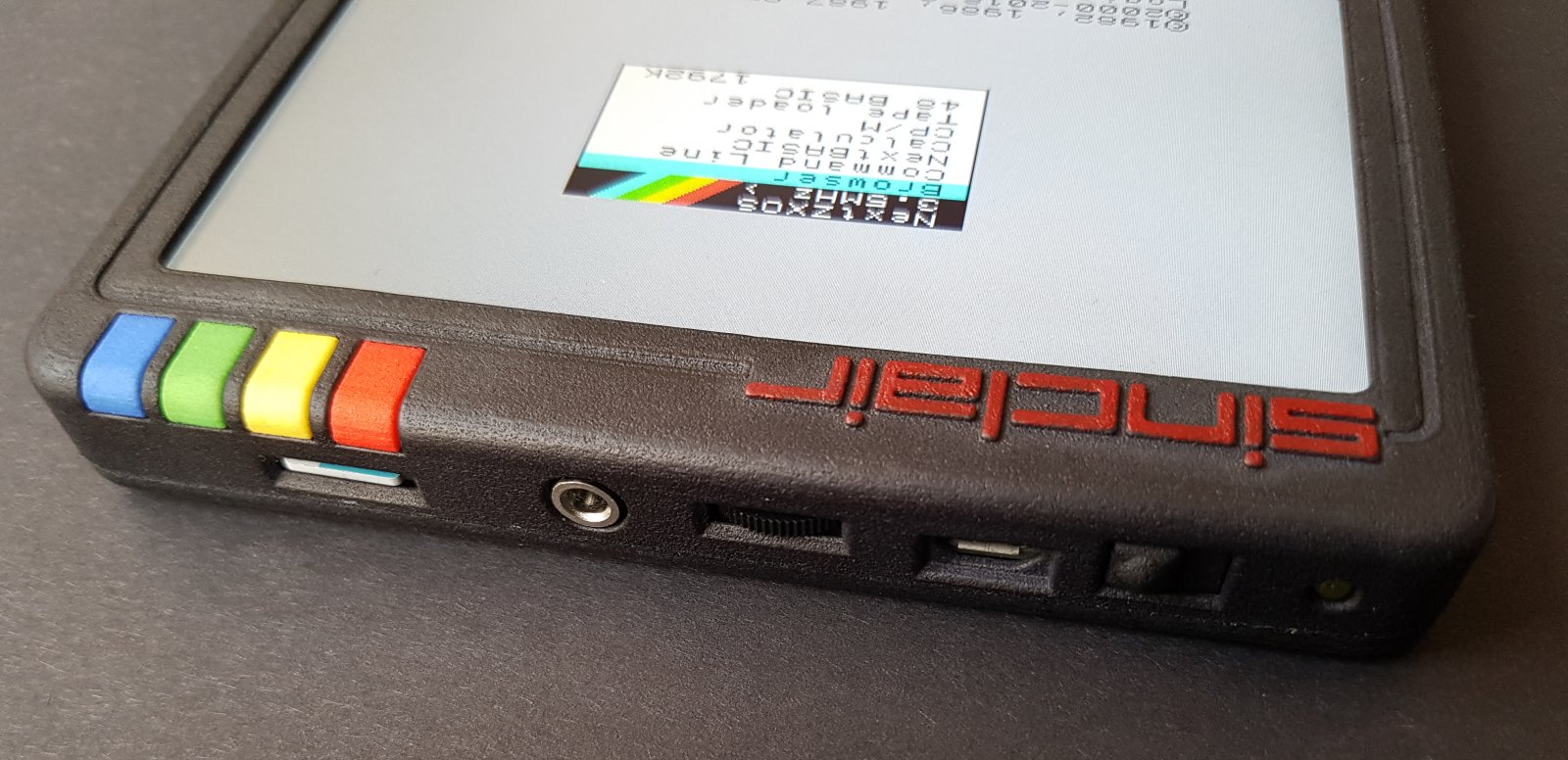
How Does it Play?
It feels pretty good to play games on it. The Nintendo DS D-pad and buttons are perfect for playing Spectrum games. The size and weight are on par with a small tablet, and the 3D-printed finish is super smooth, making it nice to hold (no sharp edges on this handheld). Here are a couple of brief videos of games being played on it. Note that the display quality is perfect and crystal clear, something my recordings and camera do not show that well.
A Quick Play of Target Renegade
Manic Miner
Warhawk
Dreamworld Pogie
Update 17/11/2018
Having tracked down a 3.5" screen capable of 800x600 via HDMI, I built a smaller version of the handheld. Here are some pictures of the smaller version:
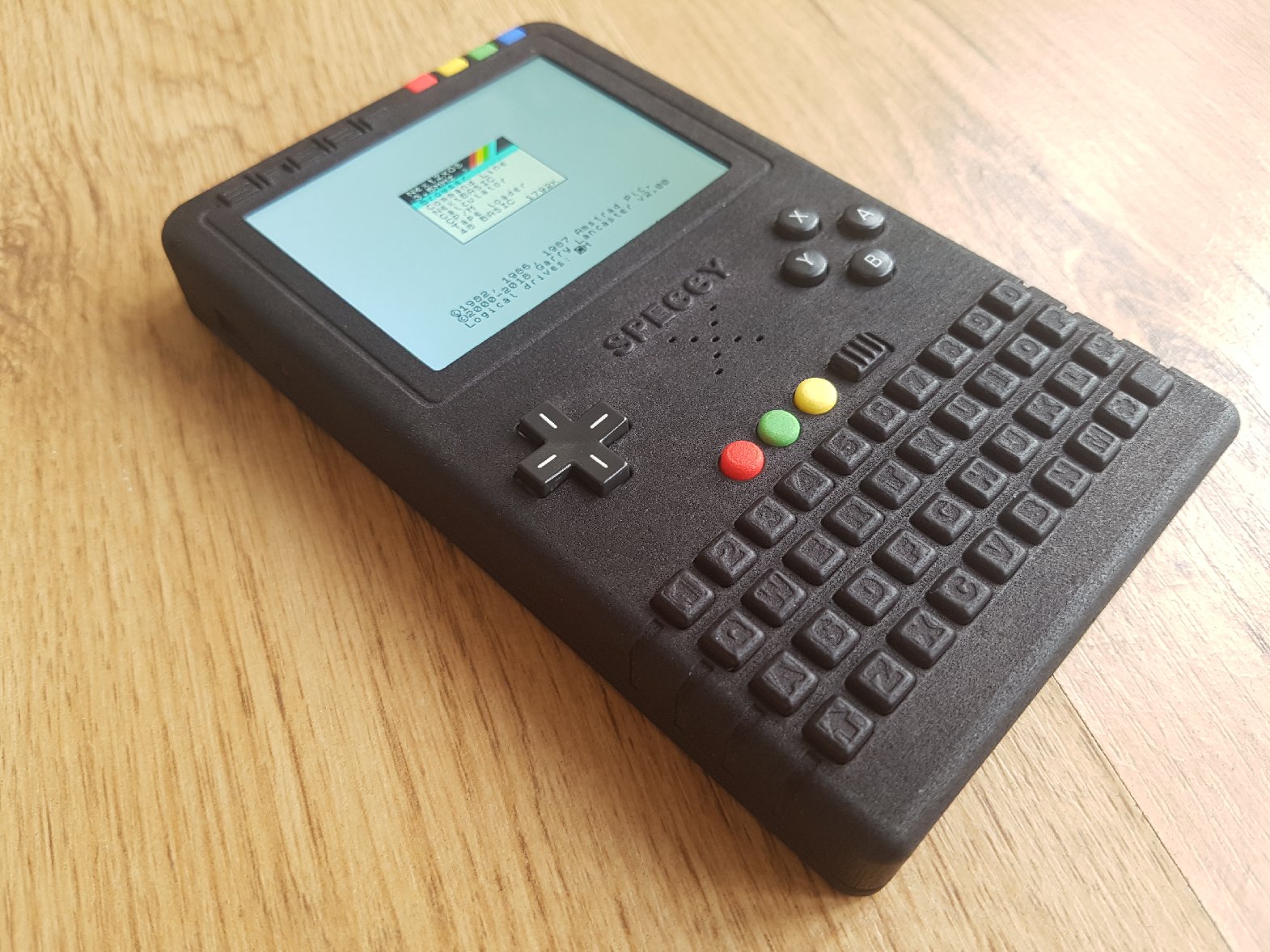
5" VS 3.5" - A Side by Side Comparison
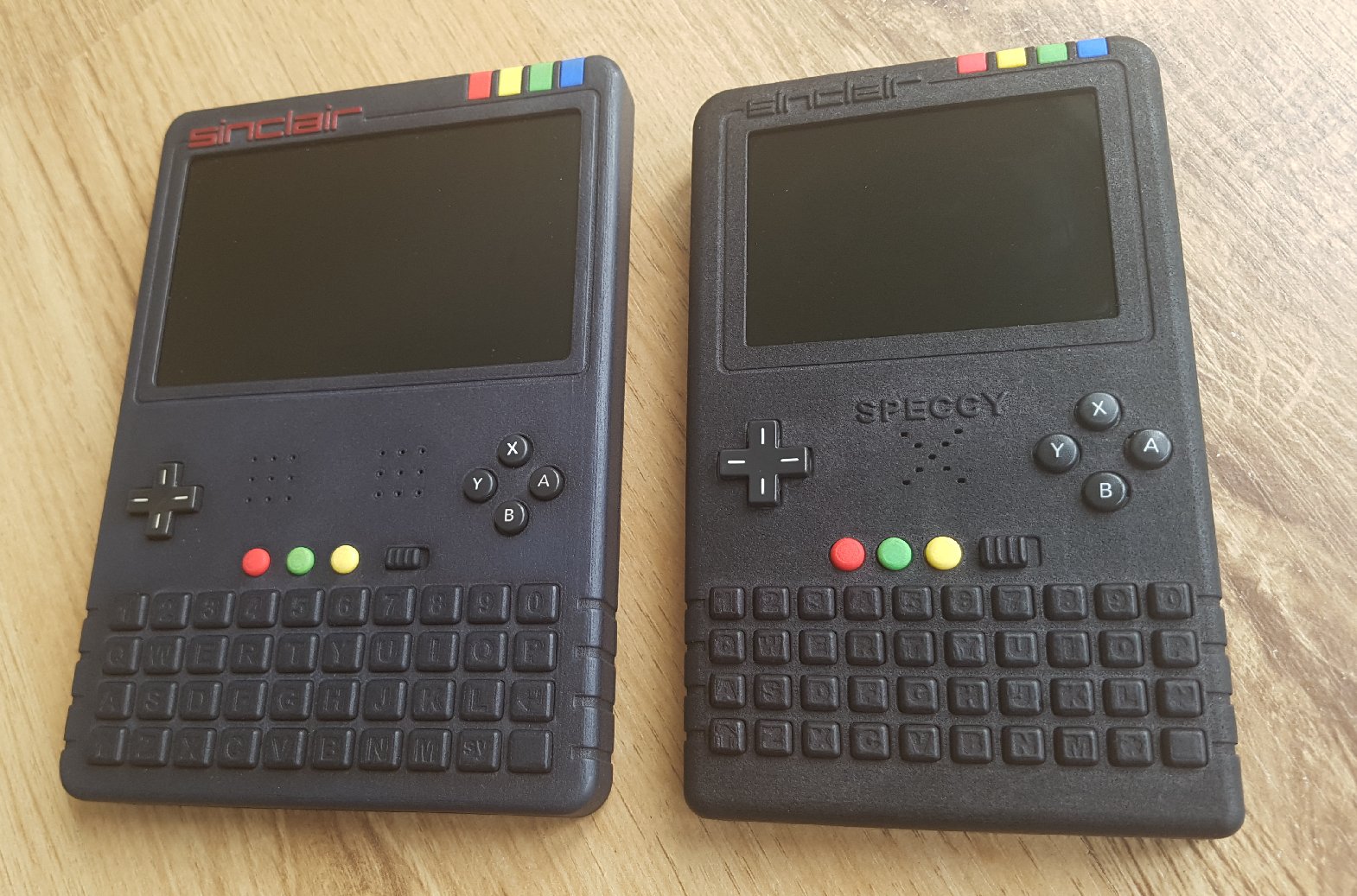
Submit a Comment
Comments
MiguelSep 05, 2018 07:55
ZXNextSep 05, 2018 08:45
[IMG]http://i67.tinypic.com/k0lzpz.jpg[/IMG]
Pascal Nobs (skysier)Sep 05, 2018 09:08
Good Job
Jim BagleySep 05, 2018 11:10
toboSep 05, 2018 12:59
But, I'm over it.
I am.
Phoebus DokosSep 05, 2018 13:29
DeonSep 05, 2018 14:02
Angel (adesilva70)Sep 06, 2018 12:19
Please help spectrum enthusiasts selling your builds.
Michael C.Sep 10, 2018 06:02
GlennSep 15, 2018 03:40
David SaphierSep 17, 2018 21:11
DavidSep 18, 2018 21:58
Rob MortonOct 30, 2018 10:35
Pascal NobsOct 30, 2018 13:43
BaggersOct 30, 2018 16:39
Yes, Dan, the screen size is Perfect, going smaller I'd say is not an option, the amount of people at the show that said ( and I agree ) it's the right size for our hands!
I took it to the show at Play Expo Blackpool, and it went down amazingly! I'll be taking it to Revival Mini, for anyone who wants to see it in person.
Asobi Quang DXNov 02, 2018 13:32
I had a go with Jim Bagley's SpeccyX at PLAYexpo Blackpool and it was perfect in so many way. Great feeling, excellent screen, good weight. I guess the only thing would be to work out some sort of backlight on the keyboard keys.
Either way, I really want one, to be able to code SpectrumNEXT stuff on the go is a dream come true.
StooNov 02, 2018 16:29
What a fantastic job. Nice one.
MattNov 05, 2018 13:43
DavidNov 27, 2018 17:50
MikeFeb 02, 2019 16:38
The Talented Mr FitchyMar 01, 2019 20:32
Darren WilkinApr 05, 2019 16:27
Adrian SinclairJul 24, 2021 21:44
Would love a 5 inch screen version of this.
Have a KS2 next coming soon but for something on the move this is perfect!
MarkJan 29, 2023 21:31
adrian browneApr 28, 2025 00:27
Word MerchantJul 24, 2025 07:45
You have got to get this manufactured: it would sell like crazy. Look at the initial demand for the Vega+.
